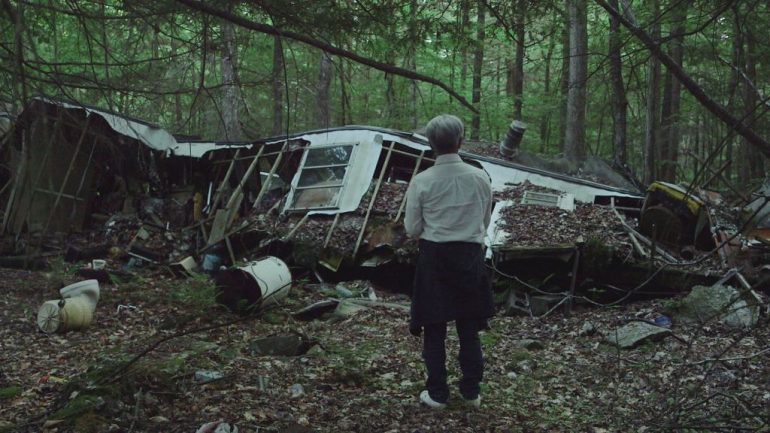Ryuichi Sakamoto: Coda is producer/director Stephen Numora Schible’s portrait of enigmatic Japanese composer and sound designer Ryuichi Sakamoto. Schible’s peek into the artist’s life is perhaps most notable for the fact that it takes place at a time when Sakamoto is going through a relatively fallow creative period. His attention has turned to other things, and he’s struggling to create music. Schible, whose previous work includes the boutique narrative feature ‘Lost in Translation, and a documentary about Eric Clapton’s Robert Johnson tribute tour, clearly has a reverence and understanding of Japan, a love of music, a keen eye, and experience behind the camera. However, the results here are uneven at best, yet still captivating – a bit like Sakamoto’s work.
Ryuichi Sakamoto began his career in the late 1970s as a founding member (on keyboards and vocals) of Yellow Magic Orchestra, a Tokyo-based electronic music band. Yellow Magic Orchestra (and by extension Sakamoto) are credited with advances in the use of synthesizers, drum machines, and “sampling” in techno-pop, synth-pop, and other electronic musical styles. Sakamoto then went on to work as a film composer and solo artist. To this day, Sakamoto performs live concerts, but is best known for his work scoring and performing on the soundtracks of more than a hundred films, including The Sheltering Sky, The Revenant, Call Me by Your Name, and The Last Emperor, for which he won a1987 Academy Award (Oscar). His haunting atmospheric soundscapes combine traditional instrumentation, sound effects, sound design, and field recordings.
Schible’s documentary slips between Sakamoto’s anti-nuclear advocacy (heightened in the wake of the 2011 Japanese tsunami and subsequent Fukushima nuclear accident), his work as a composer and sound designer, and a year-long creative hiatus during Sakamoto’s treatment for throat cancer. It is a very challenging time for Sakamoto, and likely not at all typical of his normal life and creative output.
The result is a fractured narrative that drifts from quiet moments in the musician’s living room, where he discusses his treatment, to scenes at his baby grand piano where he reveals some of his process and the difficulties of not creating for such a long time. In these moments, it’s clear that Sakamoto is quite driven. But with the creative life energy taken from him, it’s hard not to imagine a depressing end to this film.
Schible juxtaposes these more intimate moments with news footage of Sakamoto at anti-nuclear rallies, and documentary footage of Sakamoto playing a piano rescued from tsunami wreckage, as well as scenes of the artist touring Fukushima. This establishes something of a timeline for the documentary, but then Schible just as quickly abandons that structure by jumping around to various points in Sakamoto’s treatment and career. The segments at the piano, and later in his home studio and living room in New York, give us access to a bit of Sakamoto’s process, and open a window into the mind of a man whose life has been spent creating and mastering the art and interplay of sound and music.
Messy and fractured as Ryuichi Sakamoto: Coda is, it’s reflective of its subject. Sakamoto’s compositions draw from this and that, and often spring from eureka moments that seem grounded in nothing, but somehow hold together and are greater than the sum of their parts.

